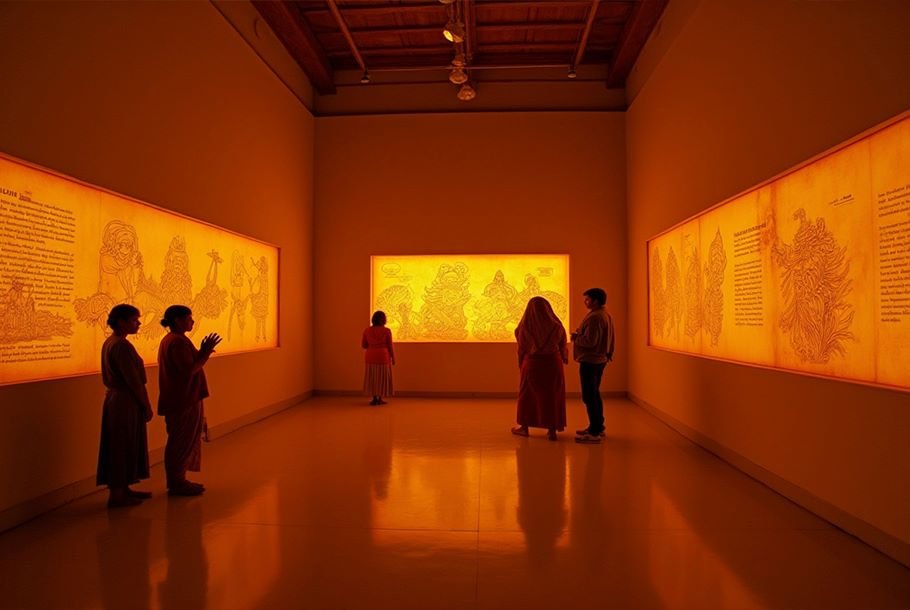
The Mortality of Language
Language exists through people and humanity. Just as human life is perishable, a language too dies with the last person who speaks it. One day it may exist, and the next, it can be buried along with its final speaker. And with his death, a world of meaning, memory, collective culture and tradition, and identity is lost forever. Language is a vessel of a mirror of human civilization. His death may have been mourned as the passing of a local elder. Yet who knew or grieved for what the extinction of a unique way of understanding the world.
According to the Foundation for Endangered Languages, about 6,000 languages are spoken across the world today. Of these, between 500 and 1,000 are spoken by only a handful of people. Every year, around 25 mother tongues vanish, amounting to nearly 250 languages per decade. UNESCO estimates that half of the world’s current languages may disappear by the end of this century. That means a language dies somewhere on Earth every two weeks. Language death is a loss of wisdom. Each language holds within it the worldview, traditions, and ecological knowledge of its speakers. When a language disappears, humanity’s cultural and intellectual diversity shrinks.
Who’s to Blame
Language extinction is not a new phenomenon. Languages die for many reasons: natural disasters, forced displacement, cultural assimilation, or even genocide. Throughout history, empires have risen and fallen, controlling language shifts. But, judged by the standards of the past, language extinction in the modern era is depleting on a massive scale. Political persecution, a lack of preservation, and globalization are to blame for the dwindling language diversity.
Powerful empires and colonial regimes imposed their languages upon indigenous populations. Over time, this linguistic dominance silenced native voices. It’s even harder to decolonise minds and escape the suffering of institutional neglect and suppression under imperial and post-colonial policies.
Some might argue that language death is an inevitable side effect of globalization. As communities seek education and employment in an interconnected world, they adopt dominant languages. Parents encourage their children to learn the “language of opportunity,” that promises education, employment, and social mobility, often at the expense of their mother tongue. Over time, intergenerational transmission breaks down, and the native language fades from everyday life. As long as a few hundred or even a couple of thousand languages survive, the gravity of the issue doesn’t feel heavy.
Parents often take pride in their children’s fluency in global languages, sometimes at the cost of their native tongue. Schools that enforce “English-only” corridors become symbols of modern success, while ancestral languages are quietly pushed aside.
Natural disasters, wars, and forced migration displace communities and disrupt linguistic continuity. Refugees, in particular, often abandon native languages to assimilate into host societies for safety or opportunity.
If you belong to a dominant linguistic group, the issue of language extinction may seem distant. But for those whose languages are on the verge of disappearance—whose tribes, ancestry, and identity depend on that survival—it becomes deeply personal. The dominance of globally accessible languages may open doors to education and employment across nations, yet it often distances us from the roots that shaped our identity. Language death is not a sign of progress, it is a sign of cultural erosion. When we lose a language, we lose unique expressions of humor, art, and identity. Literature, songs, at, culture, won’t thrive when coerced do in a dominant language foreign to us. Linguistic diversity is the heartbeat of human creativity; it breathes life into our music, literature, and oral traditions, giving each culture its distinct voice in the chorus of humanity.

India’s Linguistic Crisis
India, known for its linguistic richness, is also witnessing this silent crisis. According to the People’s Linguistic Survey of India (PLSI), the country had around 1,100 living languages, but nearly 220 have disappeared in the last 50 years. Many more are now critically endangered. The Ministry of Culture protects endangered Indian languages through the Scheme for Protection and Preservation of Endangered Languages of India (SPPEL), which is implemented by the Central Institute of Indian Languages (CIIL). This scheme focuses on documenting and preserving mother tongues with fewer than 10,000 speakers by conducting research, fieldwork, and creating resources. Other efforts include schemes from the University Grants Commission (UGC) to support university research and establish centers for endangered languages. Currently, SPPEL has identified 117 endangered languages, and is working toward documenting about 500 lesser-known languages in the future.
UNESCO’s Atlas of the World’s Languages in Danger similarly is intended to raise awareness about language endangerment and the need to safeguard the world’s linguistic diversity among policy-makers, speaker communities and the general public, and to be a tool to monitor the status of endangered languages and the trends in linguistic diversity at the global level.
We should care about dying languages for the same reason that we care when a species of animal or plant dies. It reduces the intellectual and cultural diversity of our planet. Preserving endangered languages is not only the responsibility of governments or scholars but of every individual who values identity and heritage. Community-driven education, intergenerational storytelling, and digital preservation can help revive tongues on the brink of extinction. In saving the world’s last dialects, we are, in truth, saving our stories, our wisdom, and our collective soul.
